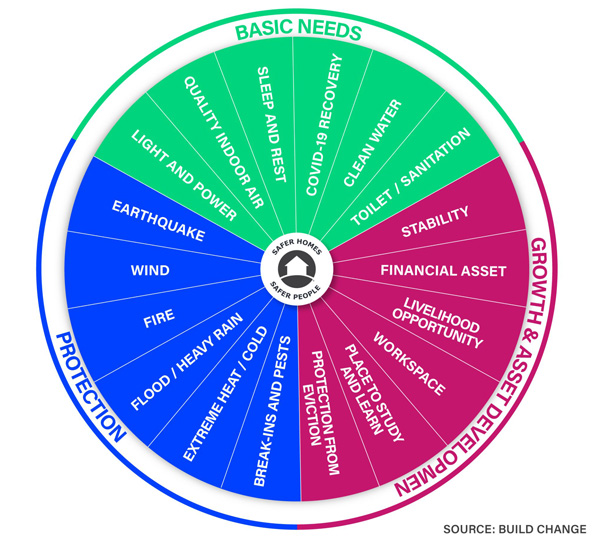
Why Resilient Housing
The ultimate protection for families
The Resilient Housing Opportunity
By 2030, three billion people – about 40% of the world’s population – will be living in vulnerable housing if we do not act more quickly. Approximately 268 million households are of inadequate quality to support the safety, health, and wellbeing of its residents.
Inadequate housing is particularly vulnerable to earthquakes and climate hazards – from fire and flood to windstorms and extreme heat.
As disasters have become more frequent and more severe, houses across the globe are more vulnerable than ever before, and people are paying the price.

Investment in resilient housing must be prioritized if we are to protect people’s health and well-being and better withstand future crises.

That’s where Build Change comes in.
As a global leader for systems change in resilient housing, Build Change protects people and their livelihoods by preventing housing loss caused by disasters and climate-induced events. We work to transform the systems for regulating, financing, building and improving houses around the world.
Resilient Housing is:
DISASTER RESISTANT
Able to protect people and assets in the face of multiple hazards.

HEALTHY AND SECURE
With adequate water, sanitation, ventilation, light, access, space, and security.

AFFORDABLE
Financially accessible for low-to middle-income households.

A FINANCIAL ASSET
And/or a place of business that stimulates economic opportunity by being adaptable to multiple uses, and protecting a family’s property investment.

SUSTAINABLE
Built and/or strengthened through processes that can be scaled and replicated, with minimal environmental footprint.

ADAPTABLE
Can be expanded and adapted to growing populations, shifting demographics, and emerging technology.

LOCALLY APPROPRIATE
Built using materials, skills, and tools that are appropriate for the culture and the climate.

SCALABLE
Able to meet the needs of millions of families through a combination of policy change, and access to finance and technology.

Explore the Build Change Guide to Learn More
Support resilient housing worldwide
Join us in preventing housing loss caused by disasters.
Donate nowNewsletter
Sign up for our newsletter to receive updates on our latest news, events, and more.